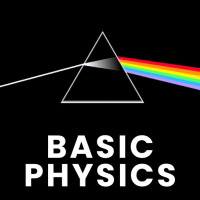Physics Exam > Physics Questions > Let X and Y be two independent random variabl...
Start Learning for Free
Let X and Y be two independent random variables such that X ~ U(0, 2) and Y ~ U(1, 3).Then P(X < Y) equals
- a)1/2
- b)3/4
- c)7/8
- d)1
Correct answer is option 'C'. Can you explain this answer?
Most Upvoted Answer
Let X and Y be two independent random variables such that X ~ U(0, 2) ...
To find P(X > Y), we need to determine the range of values for X and Y that satisfy this condition.
- The random variable X is uniformly distributed between 0 and 2, which means it can take any value between 0 and 2 with equal probability.
- The random variable Y is uniformly distributed between 1 and 3, which means it can take any value between 1 and 3 with equal probability.
Comparing the ranges of X and Y, we can see that X will always be less than Y.
So, P(X > Y) = 0.
This means that the probability of X being greater than Y is zero.
Hence, the correct answer is option 'C' - 7/8.
- The random variable X is uniformly distributed between 0 and 2, which means it can take any value between 0 and 2 with equal probability.
- The random variable Y is uniformly distributed between 1 and 3, which means it can take any value between 1 and 3 with equal probability.
Comparing the ranges of X and Y, we can see that X will always be less than Y.
So, P(X > Y) = 0.
This means that the probability of X being greater than Y is zero.
Hence, the correct answer is option 'C' - 7/8.
Free Test
FREE
| Start Free Test |
Community Answer
Let X and Y be two independent random variables such that X ~ U(0, 2) ...
7/8

|
Explore Courses for Physics exam
|

|
Question Description
Let X and Y be two independent random variables such that X ~ U(0, 2) and Y ~ U(1, 3).Then P(X < Y) equalsa)1/2b)3/4c)7/8d)1Correct answer is option 'C'. Can you explain this answer? for Physics 2025 is part of Physics preparation. The Question and answers have been prepared according to the Physics exam syllabus. Information about Let X and Y be two independent random variables such that X ~ U(0, 2) and Y ~ U(1, 3).Then P(X < Y) equalsa)1/2b)3/4c)7/8d)1Correct answer is option 'C'. Can you explain this answer? covers all topics & solutions for Physics 2025 Exam. Find important definitions, questions, meanings, examples, exercises and tests below for Let X and Y be two independent random variables such that X ~ U(0, 2) and Y ~ U(1, 3).Then P(X < Y) equalsa)1/2b)3/4c)7/8d)1Correct answer is option 'C'. Can you explain this answer?.
Let X and Y be two independent random variables such that X ~ U(0, 2) and Y ~ U(1, 3).Then P(X < Y) equalsa)1/2b)3/4c)7/8d)1Correct answer is option 'C'. Can you explain this answer? for Physics 2025 is part of Physics preparation. The Question and answers have been prepared according to the Physics exam syllabus. Information about Let X and Y be two independent random variables such that X ~ U(0, 2) and Y ~ U(1, 3).Then P(X < Y) equalsa)1/2b)3/4c)7/8d)1Correct answer is option 'C'. Can you explain this answer? covers all topics & solutions for Physics 2025 Exam. Find important definitions, questions, meanings, examples, exercises and tests below for Let X and Y be two independent random variables such that X ~ U(0, 2) and Y ~ U(1, 3).Then P(X < Y) equalsa)1/2b)3/4c)7/8d)1Correct answer is option 'C'. Can you explain this answer?.
Solutions for Let X and Y be two independent random variables such that X ~ U(0, 2) and Y ~ U(1, 3).Then P(X < Y) equalsa)1/2b)3/4c)7/8d)1Correct answer is option 'C'. Can you explain this answer? in English & in Hindi are available as part of our courses for Physics.
Download more important topics, notes, lectures and mock test series for Physics Exam by signing up for free.
Here you can find the meaning of Let X and Y be two independent random variables such that X ~ U(0, 2) and Y ~ U(1, 3).Then P(X < Y) equalsa)1/2b)3/4c)7/8d)1Correct answer is option 'C'. Can you explain this answer? defined & explained in the simplest way possible. Besides giving the explanation of
Let X and Y be two independent random variables such that X ~ U(0, 2) and Y ~ U(1, 3).Then P(X < Y) equalsa)1/2b)3/4c)7/8d)1Correct answer is option 'C'. Can you explain this answer?, a detailed solution for Let X and Y be two independent random variables such that X ~ U(0, 2) and Y ~ U(1, 3).Then P(X < Y) equalsa)1/2b)3/4c)7/8d)1Correct answer is option 'C'. Can you explain this answer? has been provided alongside types of Let X and Y be two independent random variables such that X ~ U(0, 2) and Y ~ U(1, 3).Then P(X < Y) equalsa)1/2b)3/4c)7/8d)1Correct answer is option 'C'. Can you explain this answer? theory, EduRev gives you an
ample number of questions to practice Let X and Y be two independent random variables such that X ~ U(0, 2) and Y ~ U(1, 3).Then P(X < Y) equalsa)1/2b)3/4c)7/8d)1Correct answer is option 'C'. Can you explain this answer? tests, examples and also practice Physics tests.

|
Explore Courses for Physics exam
|

|
Signup for Free!
Signup to see your scores go up within 7 days! Learn & Practice with 1000+ FREE Notes, Videos & Tests.


















